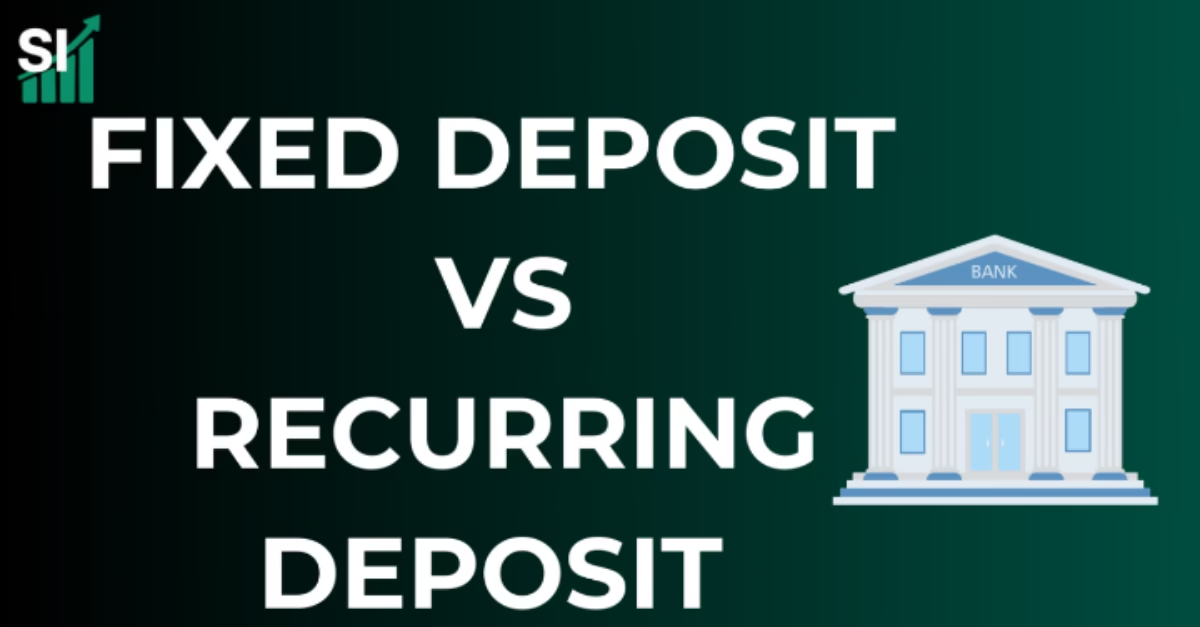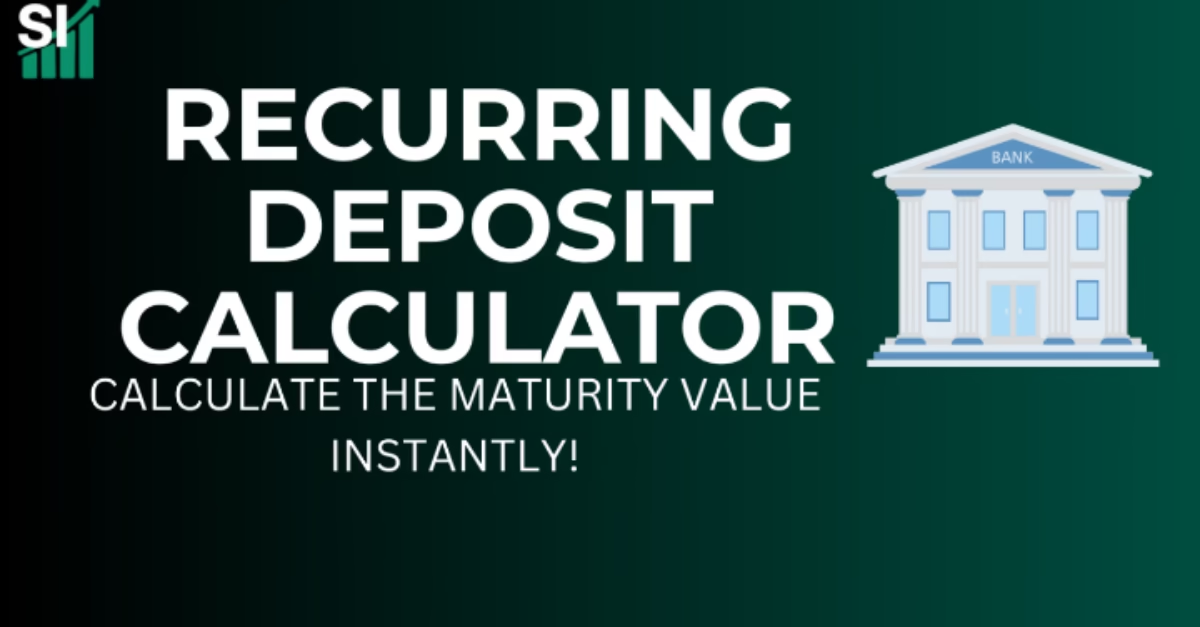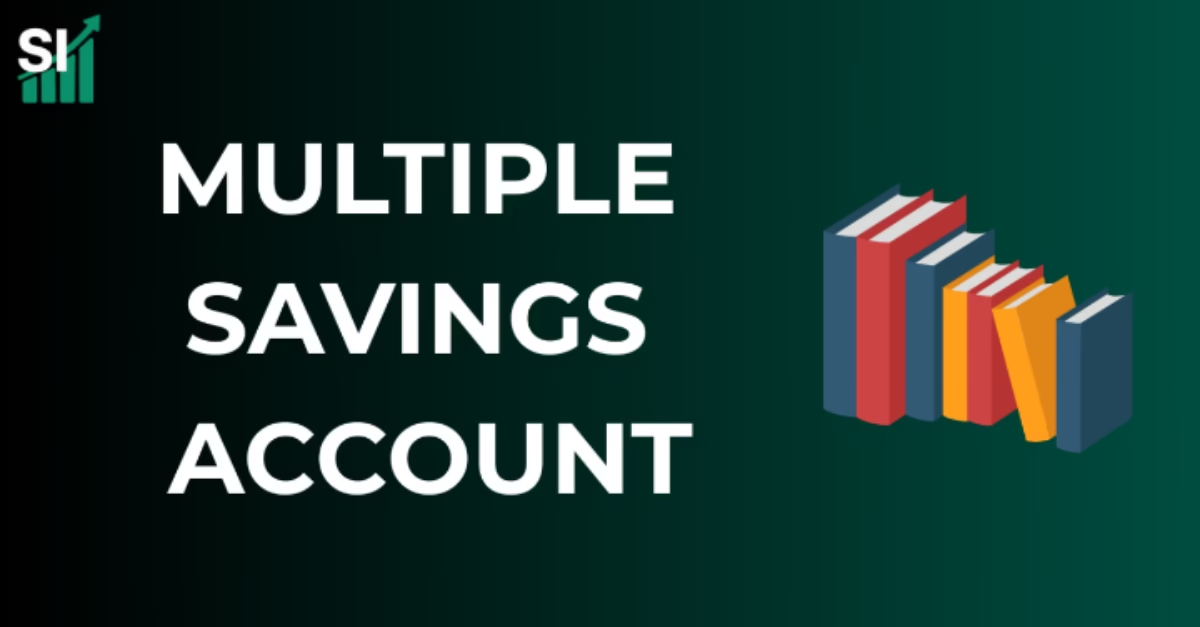Introduction to Fixed Deposits and Recurring Deposits
Fixed Deposits (FD) and Recurring Deposits (RD) are popular investment options offered by banks and financial institutions, providing individuals with opportunities to grow their savings. Both serve the purpose of wealth accumulation but do so through different mechanisms that cater to varying financial goals and preferences.
A Fixed Deposit is a savings instrument where a lump sum amount is deposited for a specific tenure at a predetermined interest rate. This option appeals to risk-averse investors who prefer stability and are looking to earn guaranteed returns on their investment. The interest rates for FDs are typically higher than those of regular savings accounts, making them an attractive choice for individuals seeking to park their money safely while earning decent returns. Additionally, the interest can be compounded quarterly, resulting in a more substantial accumulated amount by the end of the investment term.
On the other hand, a Recurring Deposit is designed for individuals who wish to save a fixed amount of money regularly, typically on a monthly basis, for a predetermined period. This option suits those who may not have a lump sum to invest upfront but are committed to building their savings over time. Like Fixed Deposits, RDs offer a fixed interest rate; however, the periodic contributions make it easier for individuals to save, as they can start with smaller amounts. It also encourages disciplined saving habits as a specific sum is set aside regularly.
Understanding the characteristics of both Fixed Deposits and Recurring Deposits is essential for making informed financial decisions. While FDs provide an avenue for one-time investment leading to substantial returns, RDs create a structured approach to enhance savings gradually. Aligning these options with personal financial goals will play a significant role in achieving desired outcomes.
Topics of Discussion
Understanding Fixed Deposits (FD)
Fixed Deposits (FDs) are a popular investment instrument offered by banks and financial institutions, providing investors with a secure avenue to grow their savings over a predetermined period. The essential characteristic of an FD is that individuals invest a one-time lump sum amount for a fixed tenure, during which the capital remains untouched. Upon maturity, investors receive the principal amount along with interest at a fixed rate, which is typically higher than that offered by regular savings accounts.
The investment process for fixed deposits is relatively straightforward. Prospective investors can choose their deposit amount and tenure, which generally ranges from seven days to ten years. The interest rates for FDs are pre-defined and do not fluctuate during the deposit period, making it a stable option for conservative investors. Notably, FDs also provide the benefit of assured returns, thereby safeguarding the investor’s capital against market volatility.
Fixed deposits are particularly advantageous for individuals with low-risk appetites seeking to secure their savings while earning fixed returns. This instrument is ideal for retirees or those nearing retirement, as it guarantees a steady income stream during their retirement years. Additionally, individuals planning for significant future expenses, such as education or a wedding, can benefit from locking in a deposit to ensure that funds are available when needed. Moreover, FDs also serve as a good option for individuals looking to build a financial safety net, allowing them to preserve their capital while earning interest effectively.
In essence, fixed deposits stand out as a favorable investment choice for those who prioritize security and predictable returns, making them suitable for various financial goals. The balance between risk and reward that FDs offer appeals to a diverse range of individuals, ensuring their continued popularity in personal finance discussions.
Understanding Recurring Deposits (RD)
Recurring Deposits (RD) are a popular savings instrument offered by banks and financial institutions, designed to encourage regular saving habits. The fundamental aspect of an RD is its requirement of consistent monthly contributions over a predetermined tenure, which can range from six months to ten years. Unlike Fixed Deposits (FD), where a lump sum is deposited at once, RDs facilitate a more gradual approach to savings, making it easier for individuals to manage their finances.
One major advantage of RDs is that they provide a safe and structured way to build a corpus. By making regular deposits, users can benefit from the compounding effect on the interest earned. Typically, RDs offer attractive interest rates similar to those of FDs, thus enhancing the total returns over time. This feature is particularly appealing for individuals who may not have large sums to invest but can commit to saving smaller amounts consistently.
Individuals who find RDs beneficial usually have specific savings goals, such as planning for a vacation, purchasing a vehicle, or funding higher education. The disciplined nature of RDs makes them ideal for those who prefer to create a savings plan that aligns with their monthly budget. Moreover, RDs can also be a suitable choice for young professionals who receive regular monthly salaries and want to cultivate a habit of saving while also benefiting from interest on their deposits.
In particular scenarios, such as when individuals foresee future expenses or wish to accumulate funds systematically, RDs prove to be an excellent option. Additionally, since RDs typically do not have premature withdrawal options or penalties, they provide a sense of security and commitment to savings. Thus, for anyone aiming to develop a disciplined saving approach, Recurring Deposits can be the right financial product to consider.
Key Differences Between Fixed Deposits and Recurring Deposits
When considering investment options, both Fixed Deposits (FDs) and Recurring Deposits (RDs) present valuable opportunities, yet they cater to distinct financial needs and preferences. One fundamental difference lies in the investment type; FDs typically require a lump sum deposit made at the outset, whereas RDs allow individuals to make smaller, regular contributions over time, fostering disciplined saving habits. This feature makes RDs particularly appealing to those who prefer to save consistently rather than having a single large sum available for investment.
Another critical factor for comparison is interest rates. Generally, banks offer slightly higher interest rates for Fixed Deposits compared to Recurring Deposits. This differentiation can lead to significant discrepancies in total returns, especially over longer investment durations. An FD’s interest is usually compounded quarterly, while RD interest accumulates similarly, but the calculation may differ slightly depending on the bank’s policies. This nuanced understanding is essential when assessing long-term financial goals, as a higher rate can translate to more substantial growth of the initial investment.
Liquidity is another prominent distinction between the two deposit options. Fixed Deposits often impose penalties for early withdrawals, making RDs more attractive for individuals who might require access to their funds before the maturation of the term. Conversely, RDs allow monthly withdrawals without penalties, but this flexibility may come at a cost of slightly lower interest rates. Moreover, taxation policies also vary, influencing the net returns from each option. Interest earned on both FDs and RDs is subject to tax under the Income Tax Act, but the actual tax implications depend on the investor’s tax bracket and individual income.
Ultimately, understanding these key differences equips investors with the knowledge necessary to make informed decisions aligned with their financial goals and preferences.
Assessing Your Financial Goals
When determining whether a Fixed Deposit (FD) or a Recurring Deposit (RD) is more suitable for your financial objectives, it is essential to assess your personal financial goals carefully. One of the primary factors to consider is the availability of a lump sum amount. If you have a substantial amount of money that you can invest at once, an FD might be more appealing, as it typically offers higher interest rates compared to RDs, where deposits are made over time.
Conversely, if you are looking to build savings gradually and prefer to invest a smaller amount regularly, an RD could be the better option. This method encourages disciplined saving, allowing individuals to accumulate funds over time without straining their monthly cash flow. It is crucial to evaluate your income stability as well; those with irregular or fluctuating incomes may opt for RDs, which allow for a more manageable cash flow while still fostering savings.
In addition to these considerations, it is important to clearly define your short-term and long-term financial goals. For example, if you are saving for a short-term objective, such as a vacation or a major purchase, an RD may be suitable due to its structured savings approach. On the other hand, for long-term financial goals, including retirement or education, an FD’s higher interest rate can significantly boost the growth of your savings.
Ultimately, your choice between an FD and an RD will also be influenced by your personal preferences regarding cash flow. Assessing these factors allows you to make an informed decision that aligns with your financial aspirations and informs your overall savings strategy.
Fixed Deposit Calculator 2025 | Free and Fast Online Tool
Use our Fixed Deposit Calculator to quickly estimate your FD maturity amount and total interest. Enter principal, rate, tenure and compounding frequency to compare cumulative and non-cumulative FDs...
Read More →Recurring Deposit Calculator 2025 | Free and Fast Online Tool
Use this Recurring Deposits calculator to estimate maturity amount and interest earned on monthly deposits. Includes RD rates overview (Sept 2025), FAQs and disclaimer.
Read More →Cash Flow Considerations
When deciding between Fixed Deposits (FD) and Recurring Deposits (RD), understanding one’s cash flow is paramount. Cash flow analysis not only assists in determining the most suitable investment option but also aligns with personal financial goals. A careful examination of whether an individual possesses surplus cash or relies on a steady monthly income can significantly influence the decision-making process.
For individuals who receive a stable monthly income, investing in a Recurring Deposit can create a disciplined savings habit. By committing to a fixed amount each month, individuals can benefit from the power of compounding interest while ensuring that their cash flow remains manageable. This method is particularly beneficial for those who may struggle to set aside large sums at once but can comfortably allocate a portion of their salary every month.
Individuals with surplus cash may find Fixed Deposits more attractive as they allow for a one-time lump sum investment, which then earns interest over a predetermined period. This option is ideal for those who can set aside a significant amount of money without compromising their liquidity. In contrast, a Recurring Deposit caters to those who prefer to save smaller amounts consistently. Monthly contributions towards an RD allow individuals to accumulate savings over time while also earning interest, making it an excellent choice for those with regular incomes.
Ultimately, one’s cash flow situation must dictate the choice between FD and RD. Both options offer unique advantages depending on the investor’s requirements and financial circumstances. By examining personal cash flow and savings behavior, individuals can make an informed decision that aligns with their financial objectives and enhances their overall savings strategy.
Building a Savings Habit
Establishing a savings habit is an essential component of achieving long-term financial stability. Recurring Deposits (RDs) serve as a structured approach to cultivate this habit, allowing individuals to make consistent contributions at regular intervals. By committing to monthly savings, RDs not only promote disciplined saving but also instill a sense of financial responsibility among savers. This method contrasts with lump sum savings typically associated with Fixed Deposits, which can lead to less frequent engagement with personal finances.
One of the significant advantages of RDs is their ability to help individuals reach specific financial goals. For instance, many people save towards purchasing a car, planning a vacation, or funding a child’s education. By setting up a recurring deposit, savers can calculate the required monthly contribution and schedule it in alignment with their income streams. This strategic approach makes it easier to monitor savings progress and adjust spending habits accordingly, reinforcing the importance of saving consistently.
Additionally, RDs can provide a sense of accomplishment as individuals witness their savings grow over time. This progressive increase can further motivate them to maintain their savings habit in various aspects of life. For example, someone saving for a family event or a new gadget may find that the disciplined nature of an RD enables them to reach their target within the expected time frame. Overall, the simplicity and systematic nature of RDs serve as a practical tool for enhancing personal financial management and encouraging a culture of saving.
By integrating RDs into financial planning, individuals not only lay the groundwork for achieving specific goals but also foster a lasting savings mindset that can benefit them throughout their lives.
The Case for Diversification: Having Both FD and RD
Diversification in personal finance is a fundamental principle that allows individuals to mitigate risks while optimizing returns. When it comes to savings strategies, the combination of Fixed Deposits (FDs) and Recurring Deposits (RDs) presents a balanced approach to managing personal finances. Each of these options serves a unique purpose, benefiting savers in distinct ways.
Fixed Deposits offer investors a lump-sum investment for a predetermined period, providing assured returns at a fixed interest rate. This instrument is particularly appealing to those looking for stability and guaranteed returns, making it an excellent choice for future financial obligations, such as buying a home or funding a child’s education. On the other hand, Recurring Deposits allow for small, regular contributions over time, which can enhance the savings discipline. This method is especially beneficial for individuals who may not have large sums to deposit initially but wish to accumulate wealth gradually.
By holding both FD and RD accounts, individuals can enjoy the benefits of capital growth and liquidity. For example, the FD can yield a higher interest return on a significant amount already saved, whereas the RD can serve as a continuous savings mechanism to build a corpus. This can be especially advantageous for young professionals or families with evolving financial needs, as the dual approach allows for flexibility in managing unexpected expenses or investments. Additionally, combining the two can optimize tax benefits, as interest earned on both instruments can be planned according to one’s financial goals.
Moreover, having both savings vehicles allows savers to adapt to varying economic conditions. In times of high-interest rates, enhancing the FD could result in better returns, while during periods of economic stability, maintaining an RD could ensure consistent liquidity. In conclusion, the dual strategy of leveraging both Fixed and Recurring Deposits promotes a holistic savings approach, accommodating short-term needs while securing long-term financial goals.
Conclusion: Making the Right Choice for Your Financial Future
Choosing between fixed deposits (FDs) and recurring deposits (RDs) is an important financial decision that hinges on individual needs and circumstances. Throughout this article, we have explored various aspects of both investment options, highlighting their respective benefits and drawbacks. It is crucial for individuals to carefully assess their financial goals, investment horizon, and liquidity requirements before committing to either a fixed deposit or a recurring deposit.
Fixed deposits often attract those seeking the benefits of a lump sum investment with a predetermined interest rate, providing security and a guaranteed return over time. The longer the tenure, the higher the interest rate generally offered, making FDs an attractive option for conservative investors or those looking to save for long-term goals like retirement, education, or major purchases. On the other hand, recurring deposits cater to individuals who prefer to save smaller amounts regularly, thus instilling a disciplined saving habit while still earning interest. This makes RDs particularly appealing to those who may not have a large amount of capital to invest upfront but wish to accumulate savings over time.
The decision ultimately boils down to personal financial circumstances. Potential investors should consider their immediate cash flow needs and future financial objectives. If liquidity is a concern, the structured savings implemented by RDs may be more beneficial, enabling gradual growth without tying up funds for extended periods. In contrast, for those with surplus funds looking to maximize returns, fixed deposits can offer a stable avenue for earning interest without excessive risk.
By taking into account these factors, individuals can make informed choices aligning their financial aspirations with the right investment vehicle, whether it be fixed deposits or recurring deposits, paving the way for a secure financial future.
Further Reading
The Importance of Multiple Savings Accounts for Financial Organization and Security
Multiple savings accounts make it easy to track goals, save with discipline, and manage money more effectively every month.
Read More →



